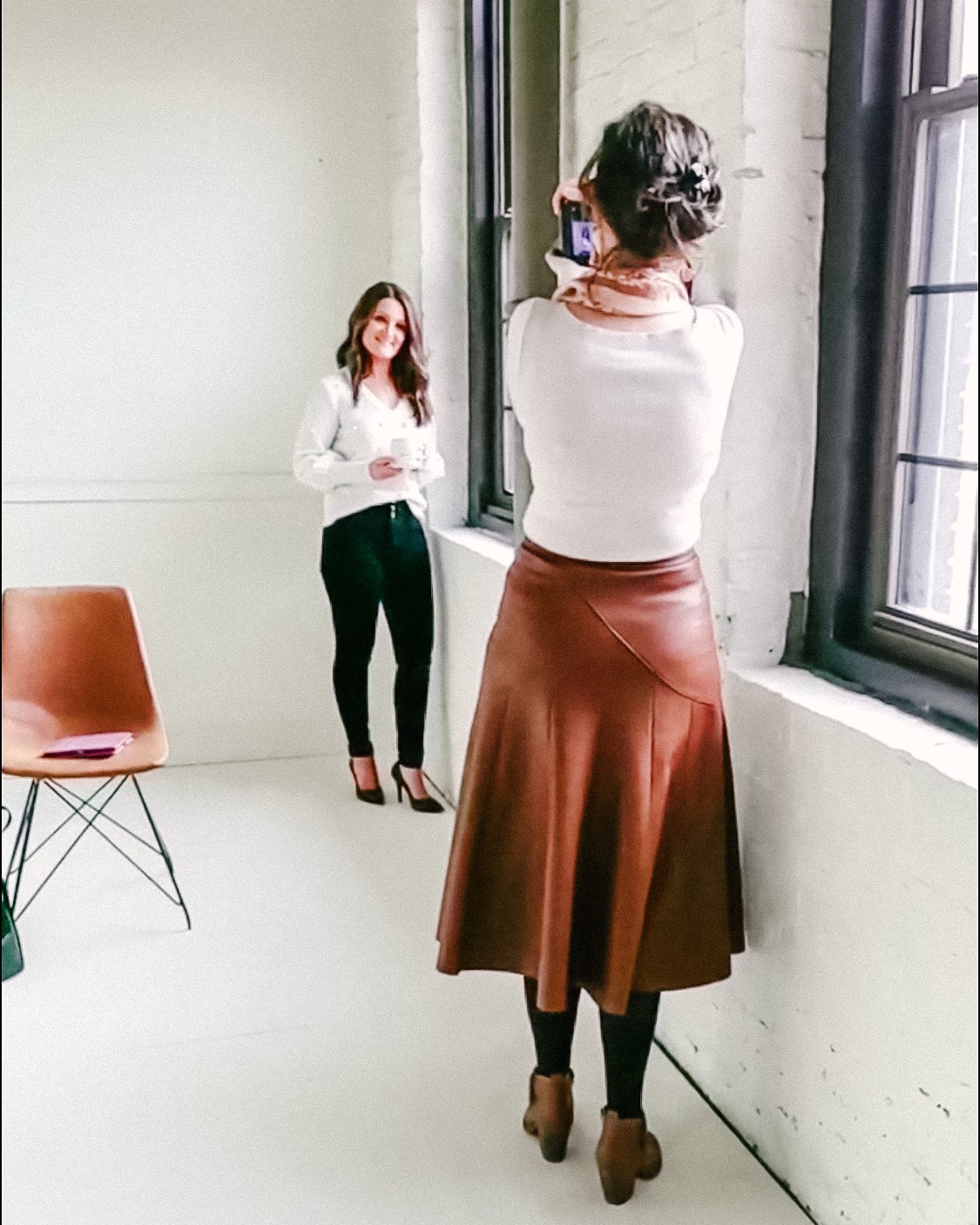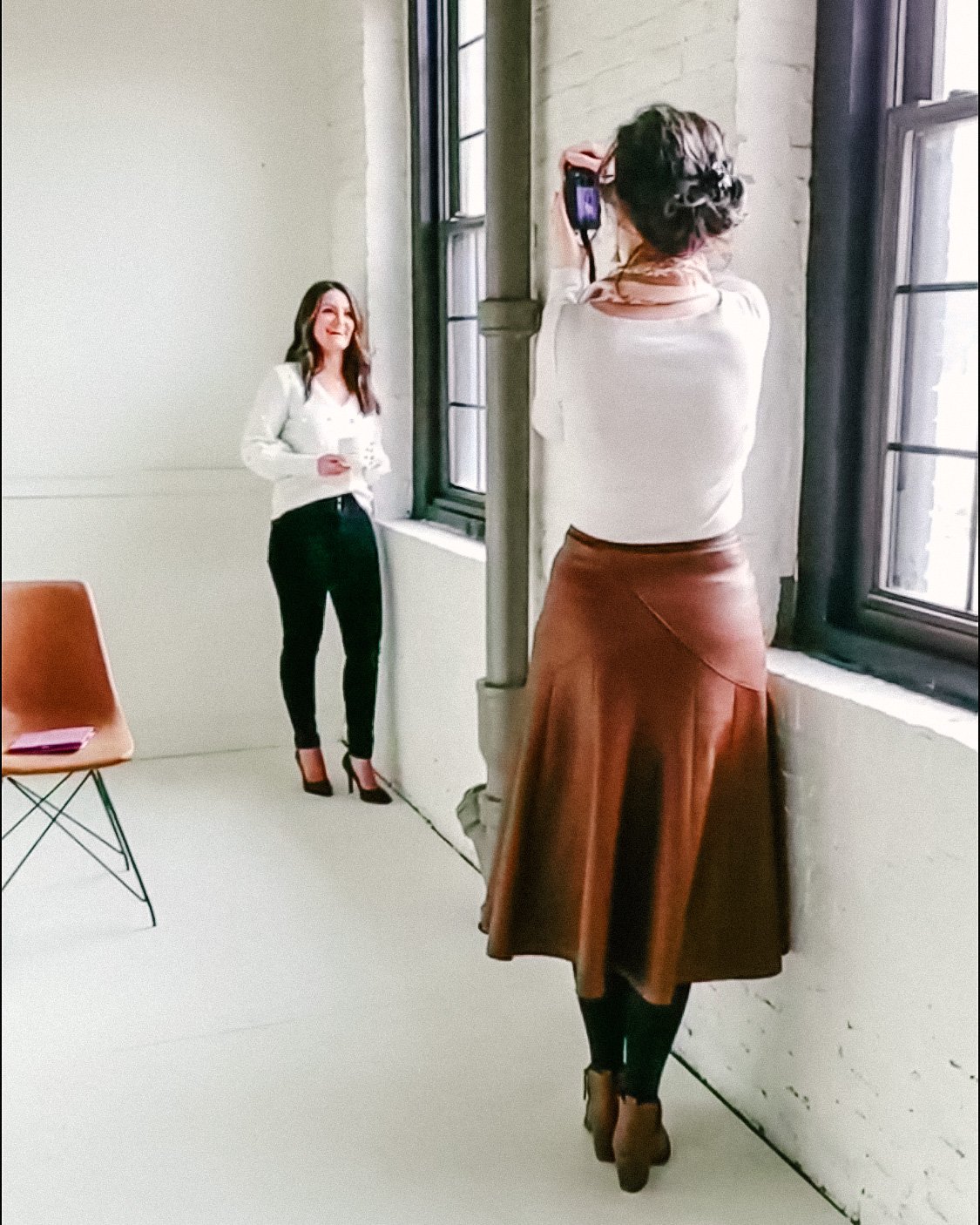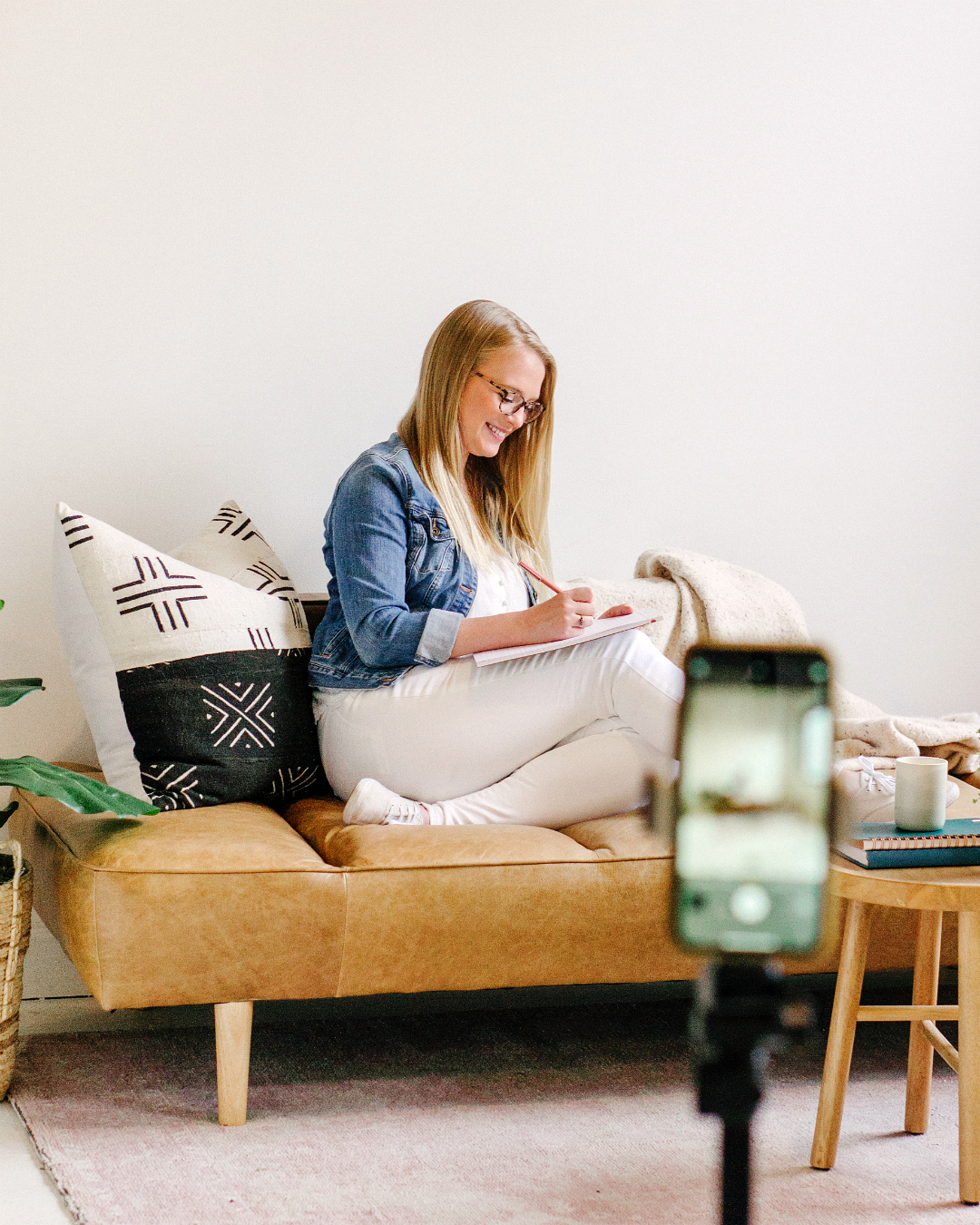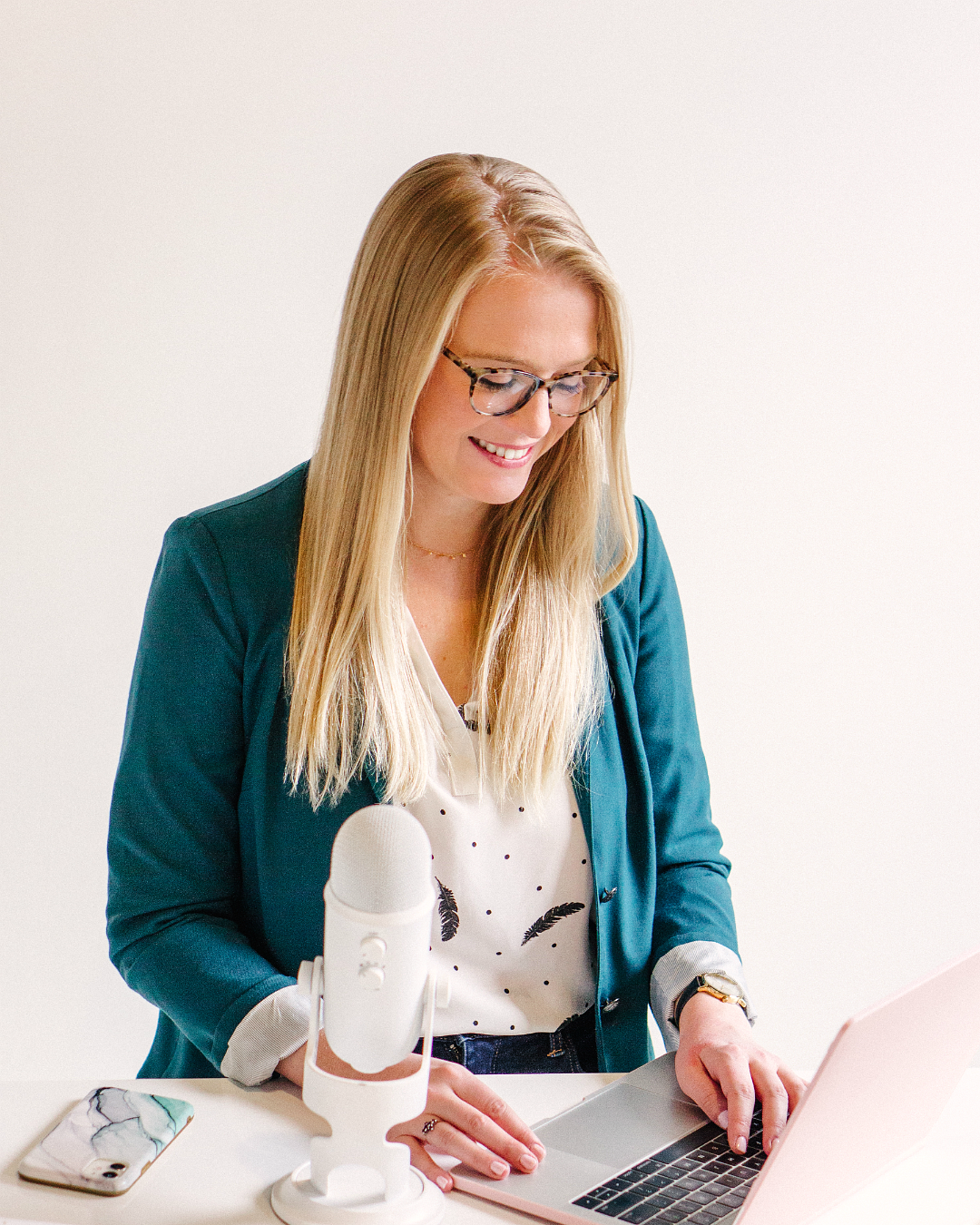How to Put Together a PROFITABLE Shot List for Your Photo Session
I’ve walked a mile in my clients’ shoes, and let me tell you: I understand deeply what a big commitment it is to book a photo session.
For one thing, it’s expensive. Hiring anyone for an hourly rate that exceeds $150 can require a lot of courage—because chances are, if that investment doesn’t pay for itself immediately, you’re never getting that money back. God knows how many other places in our businesses we could have used the cash.
For another thing, a lot of us aren’t super comfortable in front of the camera, so we want to be really sure we’re working with someone who can find our “good side,” help us relax, and capture those moments that feel joyful and candid even if they were hard-earned and staged.
And finally—and maybe most importantly—we want to be sure we’re going to be able to use the photos we get on the other side. Not just because we like the way we look in them, or because they were shot on a pro camera instead of a phone, but because they were shot in a practical way for the technology and media we use to reach our audiences.
If all that sounds Greek to you, hold tight—all will make itself clear in the following 5 pro tips!
Profitable Photo Tip No. 1:
Know Where You Plan to Use Your Photos
I can’t tell you how many times I’ve been hired by someone who told me, “I trust your judgment,” or, “Just get whatever you think I’ll need.”
I totally respect the heart and mindset behind this trust, because I know where it comes from. I get to work with a beautiful culture of women who listen to their coaches, want to pay other professionals what they’re worth, and actively outsource the areas of their business that aren’t their Zones of Genius. These women look to me as an expert in brand photography, which I am, and they try to defer to my judgment because I’m so experienced.
However.
I actually don’t know what anyone’s business needs for photos unless I have a little insight into how that business reaches its people and makes its money.
A blog that makes money off sponsored posts and ad clicks, and gets tens or hundreds of thousands of views each month from Pinterest traffic, is going to need every possible angle and detail of whatever I’m shooting—and most (if not all) of those images will need to be shot vertically so as to take up more real estate on Pinterest.
A one-to-one, local service provider who only needs 4-6 new clients per month and gets those leads from Instagram needs diversity in their images, rather than a dozen shots that are only marginally different from one another, and all the images need to be able to crop easily to 4x5 vertically without losing critical details.
A course creator who needs images for landing pages and webinars probably needs higher-contrast images that really pop—for example, images where the background and the subject are complimentary colors—and images that contain negative space that can be used for text. Oh, and it’s likely that half or more of the images will need to be shot horizontally, since they’ll be viewed on desktop computers rather than mobile devices.
Until I know the primary place you plan to use your images, I won’t be able to offer insight into what kinds of shots will be most profitable for you! So think critically about where you see yourself using the photos from your shoot, and loop me in when you have that clarity.
Profitable Photo Tip No. 2:
Write an actual shot list (just a draft is fine)
Even after you determine in your mind that most of your shots will probably be used in a specific place—Instagram, for instance, or your website—you want to actually acknowledge any place—on the internet or otherwise—that you imagined these photos being used.
You’ll want to grab a pen and paper for this part, and jot down every shot you imagined getting. Here are some examples of what I mean:
A new headshot for your about page
A shot of you at your desk, smiling at the camera, for a Facebook ad
A “fistful of flowers” shot to use in your next webinar
A photo of a physical product you want to add to an online shop
A photo of you holding out a beautifully wrapped gift, which will be used on the pop-up opt-in box that appears on your websites when a new visitor arrives
All of these shots are shots that are in your head and no place else. I certainly don’t know that you want them unless you tell me, and I definitely don’t know the little details you’re picturing about each one of these shots that will matter to you when you receive your final gallery—like whether the image is tall, wide, or square; what you’re wearing in this image; whether you’re looking at the camera or not; the energy of the image; whether you’re sitting or standing; what room or props are part of the scene, none of it.
Write down these details. Not only will they help me on the day of your shoot to get exactly what you need, but they’ll also help you form a packing list of props and clothes!
Profitable Photo Tip No. 3:
Budget for 2 Hours or More
Although my sessions start in blocks of one hour, most businesses will need more than an hour if they hope to get all the essential shots on their list, let alone shots that will last more than a month across their various marketing efforts.
This is a hard thing for me to admit, because I want my photography to be available to as many people as possible, and booking even just two hours instead of one can be quite a leap of faith financially for many people, perhaps even impossible for some.
However, I know from experience both behind the camera and in front of it that the shoots that actually help a business keep up with a comprehensive marketing strategy for a fiscal quarter are the ones that are 3+ hours long.
A single hour is often only good for a few headshots that can be used for media kits and guest speaking opportunities, and two hours will be good for populating Instagram for maybe 6 weeks, and then you’re scrambling for fresh content material again.
I’ve had several half-day sessions (4 hours each) with clients this year who were able to stretch the content we created together over all their platforms and make it last longer than a quarter or even six months while still appearing to be generating fresh content all the time. If you’re able to invest $1079 into your business that will help you scale your income for the next 4-6 months, that’s actually a more profitable move than spending $339 on a handful of photos that can only be used in one or two specific contexts, and maybe give you a little momentum but not enough runway to get that return on your investment.
Profitable Photo Tip No. 4:
Plan for 6ish Scenes per Hour
Between flat-ironing frizz, switching outfits, moving around props and furniture, and even traveling to different locations, a lot of photo session time gets eaten up in necessary, non-picturing-taking tasks.
This means that per hour, I’m usually able to shoot somewhere between 4 and 8 different “scenes.”
What constitutes a “scene”?
Let’s say we’re taking pictures in your home. If you want me to photograph you making coffee in your kitchen, that’s one scene—even if I shoot the whole process from start to finish, taking shots from a range of angles, it’s all one scene, because it’s one location, one outfit, one lighting situation. Then if we move to your living room and do a series of shots of you journaling on the couch, cozied up with a blanket and a hot tea, that’s another scene.
Breaking it down like this and saying I can get to an average of 6 scenes per hour makes it a little easier to maximize and/or prioritize your shot list.
When you look over all the shots you’ve imagined in your mind’s eye, you may have 20 scenes you want to do, but your budget may only be for 2 hours. This means you’ll need to get really clear on which 12ish scenes will bring you the most benefit in your business.
Not sure how to narrow it down? Tip No. 5 has you covered!
Profitable Photo Tip No. 5:
Know Where You Actually Make the Most Money in Your Business
If you’re just starting out—maybe even if you’re a year or two into business—you may not have done the digging yet to discover which of your marketing efforts yield the highest return.
I was shocked a few years ago when I traced back where all my leads came from that fiscal year and realized that Instagram had brought in $12,000 more than any of my other social media accounts. $12,000! That is one thousand dollars more per month than any other platform was getting me.
At that time in my business, I was spending hours each week answering questions in Facebook groups, I was paying a Digital Marketing Manager to handle my Pinterest, and I was emailing my list. And while being in Facebook groups led to email subscribers, and Pinterest helped my SEO, and my email list helped me funnel strangers in other countries and states into my online courses, at the end of the day, sessions were being booked because of Instagram. And sessions were where I made the most money.
You better bet the following year I changed up where I spent the most time in my marketing strategy!
Now, in your business, it may be totally different—perhaps you get the most profit from Pinterest, because you’re a retailer and Pinterest traffic goes straight from pin to listing to purchase—but if you want a truly profitable photo session, then you should know where your marketing efforts are actually leading people to buy with you. So ask yourself:
How much money am I making? (For example, in the last year, did you make a total net profit of $30K?)
What brings in the most money?* (For example, if you have multiple revenue streams, like I do between digital products and physical services, which one made you more money out of that $30k?)
How do the most people find the offer that brings in the most money? (For example, if you have a field on your website’s contact form that asks, “How did you hear about us?”, does the data you’ve collected say the most people selected “Google Search” or “Facebook Ad” or “Instagram”? Be sure to match the lead source to the way people spend money with you!)
What could I do to make that funnel even stronger? (I’m teaching funnels in 2022, so if you’re unclear on what this question means, be sure to join my email list so you don’t miss out!)
The bottom line here is: Figure out what actually makes your business the money that keeps it alive, and focus your marketing efforts there. If your strongest funnel is Facebook Ads to a Webinar to a Sales Page, then don’t spend a thousand dollars on photos for Instagram—spend them on even better photos for your Facebook Ads, Webinar, and Sales Page!
Overwhelmed Yet?
Here’s My Final Tip: Don’t Overthink It.
It might not seem fair to throw out this tip after everything else I’ve said, but try to understand: I share these tips to give you “Ah-ha!” moments.
Chances are, you probably at least sort-of understand most of the concepts I shared here today… but if there was one tip that really jumped out at you, it may be that there’s a gem in there that will help take your photo shoot from flat to fantastic. Alternatively, if there’s a tip in there you can really feel yourself resisting, that may be the tip you need to lean into.
Photo sessions should be fun, so don’t put too much pressure on them…. Just remember that they’re a business investment, too, so if you can get clear on a few goals before our time together (like you want a stronger Instagram strategy in 2022, or you want your next webinar to not be so cringe), you’re much more likely to put together a shot list that lasts, helps you generate more revenue, and feel like you got your money’s worth!
*Footnote: “Money” and “profit” are not synonymous. The offer in your business that makes the most money is not always the one that brings in the highest profit. Be sure that you’re pouring your efforts into the offer that will most realistically bring your business the profit that will keep you sustainable! If the process of figuring this out is intimidating to you or you’re unsure at all, seek the assistance of a financial business advisor.
HELLO! MY NAME IS ALEXIS.
Coffee lover, day dreamer, foodie, and creative. I believe in doing what you can with what you have where you are. I blog to help you do more with what you have. I hope you love it here!

























Want to try passive income by selling online courses? Keep your overhead low with this plugin!